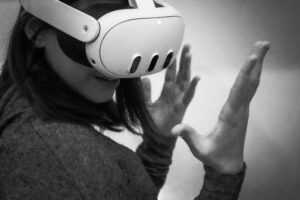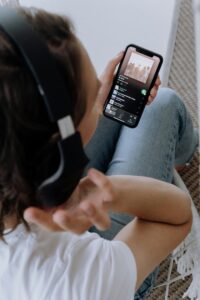The forgotten feeling: what VR glasses tell us about good sound
Imagine you’re watching a video. Not on the TV, but as if you were in the middle of it. Everything around you is an image and it feels like you can walk through the scene. I’m talking about VR goggles, and to be honest, until recently this was more of a gimmick for me. The images were often blurred, pixelated – you could sense the potential, but it didn’t really blow you away. But then Meta Quest 3 came into play. And with it came a resolution that simply left me speechless. Suddenly the image was so incredibly sharp, so detailed, that I really felt like I was part of this other world.

But the real kicker came when I took my own videos from my hard drive and created them with a special program called Owl3D for these glasses. I put them on and the moment the video started, I thought: “This is amazing! I’ll never look at a normal screen again!” The image was so lifelike, so tangible. And although it was already breathtaking, I instinctively felt: “If only the resolution was just a little bit better!” It’s hard to imagine how incredible it would look if it were absolutely perfectly sharp – simply stunning. It’s already great, you can see everything, it looks great, but that last little bit more pixels, that would be it!
Why we talk about VR when it comes to good sound
It is precisely this feeling, this intuitive understanding of “resolution” and what would constitute an even sharper image, that is the key to a realization that many of us have unfortunately lost in the field of audio. Because it’s exactly the same in the world of sound! The only difference is that hardly anyone today knows what “good” sounds like.
We are surrounded by music. It’s playing on the radio, streaming on our smartphones, coming out of small Bluetooth speakers. And yes, it all sounds okay somehow. It’s as if we’ve been looking at the world through these slightly pixelated VR glasses for years. We no longer know what we’re missing. We have become accustomed to a lower sound resolution, to highly compressed formats in which countless nuances, tiny details and the natural spatiality are simply no longer there.

As with VR glasses, where you lack a little resolution to really feel the fine texture of a tree bark in the virtual forest or see the sparkle in the eyes of an avatar, we lack the sound pixels in the sound. We hear the song, yes. But do we also hear the subtle vibration of a guitar string, the delicate reverberation of a voice in the recording room, the exact position of each individual instrument on the virtual stage? Can we hear the “air” in the room where the drums were recorded? Quite often, unfortunately not.
Rediscovering the lost dimension of music
Hi-Res Audio or excellent vinyl playback are like those razor-sharp VR glasses that suddenly show you what is visually possible. They add the lost pixels of sound. Suddenly, a whole new dimension of music is revealed:
- Spatiality: The band is no longer a flat carpet of sound in front of you, but spreads out in the room. You can clearly locate individual instruments, feel their exact position and their reverberation, as if you were sitting in the middle of a concert hall.
- Subtlety and detail: You suddenly hear the sound of the singer’s breathing, the soft creaking of a chair in the studio, the plucking of the strings of an acoustic guitar – all these tiny details that make the listening experience incredibly vivid and real.
- Dynamics: The music really “breathes”. Quiet passages are really whisper-quiet, loud explosions are powerful and clear without being unpleasant or overdriven. The entire emotional range of the recording is palpable.
- Emotion: With all these additional sound pixels and details, the music becomes more emotional, more gripping, more real. You are no longer just a listener consuming a recording, but immersed in the experience and almost become part of it.
Many of us listen to music today as if we were looking at a world-famous painting through a tiny, blurry cell phone camera. You get the idea that you recognize it. But then you suddenly find yourself standing in front of the original in the museum. The colors, the texture of the brushstrokes, the sheer size – it’s a completely different emotional experience, isn’t it? You didn’t know what you were missing until you saw the real thing.
It’s the same with the sound. For a generation that grew up with compressed MP3 files and streaming in average quality, the full, unadulterated sound – as it was recorded back then, with a stable power supply and via analog mixing consoles directly to tape – may be a completely new sensation. It’s not just “better”, it’s fundamentally more. It is a deep immersion, a rediscovery of the music we love and the experience of emotions that were previously hidden.
Take the plunge: recalibrate your ears
Maybe it’s time to put on the “VR glasses” for your ears. Find a really good hi-res source, be it a streaming service that offers lossless playback, a well-recorded vinyl or a high-quality FLAC file. Listen to your favorite music – and let yourself be surprised. You might very well realize afterwards: “I never want to listen with less sound resolution again!”
Florian Reiterer is an audio engineer and musician with a passion for high-resolution audio. He founded Mother Earth Radio to explore and deliver the best possible listening experience.
…see full Bio

Leave a Reply
You must be logged in to post a comment.